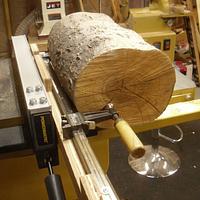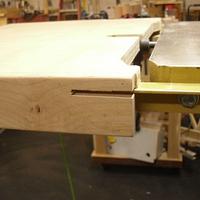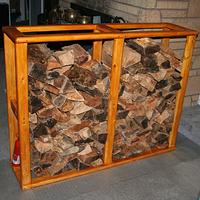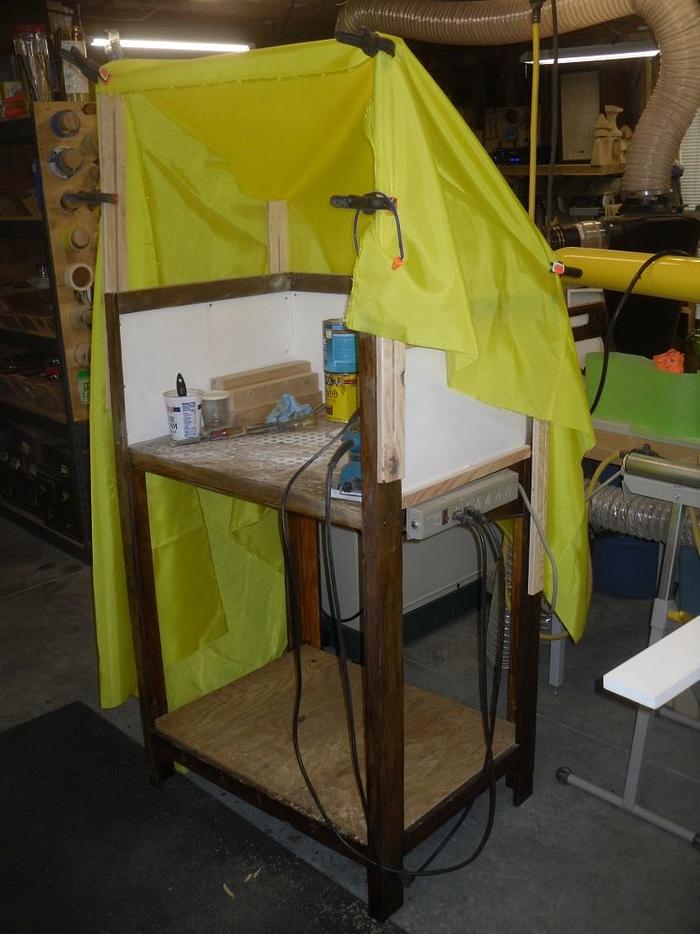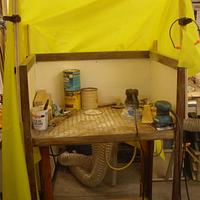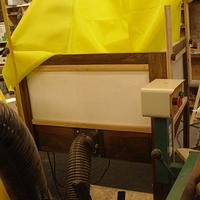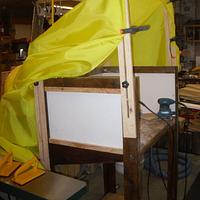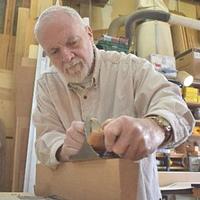Kelly
in over 11 years
More from Kelly
Sanding Station With Adjustable Hood
This is my sanding station for small items. It’s become a major asset to my shop, because of the amount of dust it cuts down.
The box is about two inches deep at the front and about six inches at the back, where the dust collector connects. The table measures about two feet by three feet. The back, as seen in the photo, has a four-inch port, to which my 3hp collector attaches, by way of a Super Dusty Deputy Cyclone.
The holes were hand drilled (it’s an hour to town and I didn’t have peg board) and are just a little larger than you would find in peg board.
I can do items about four feet long by flipping them around. When necessary, I can lay larger items in at an angle and out the top, which still collects most the dust. Too, since the hood adjusts up and down by adjusting each corner hood support, items nearly three feet tall can be sanded. Of course, the closer I work to sanding table, the better the dust collection.
This works so well, I try to do all my small routering projects in it, since it stops most of the debris from the operation going airborne.
This started as just a box. Like many of the commercial versions sold, it helped collect dust, BUT was VERY inefficient. To use it, I laid on the Workmate or another surface. It helped, but I always knew it could be much better. To make it better:
(1) I added legs so it didn’t have to search for a surface on which to rest it, during use, and so I didn’t have to go to the trouble of setting it up each time I wanted to use it.
As things tend to go, the easier it is to use a tool, the more it gets used. So it is with the sanding station. Even one minute sand projects get done in it. If it were not always set up and ready to go, not so much.
(2) Next, I added adjustable corner poles (for lack of a better term) so I could keep the working area as small as possible, for good air draw, but raise the sides for larger items, when needed.
(3) For the same reason labs that work with dangerous chemicals and biological agents use work areas that have sides, backs and tops, forcing all air drawn into them to come only from the front, past workers, I added an enclosed hood to my sanding station.
I had a large piece of nylon lying around, and it makes an excellent hood, for controlling where air is drawn from. It works so well, I can grind wood with an aggressive bit on my Foredom carver and watch the dust and debris fly straight back into the station, then make a 90-degree turn down into the table, as the dust collector pulls air from where I am sitting.
I don’t know the percentage of improvement adding sides, a back and top did, but I would not be surprised if it was in the area of 1,000 percent.
4 Comments
Looks like it will work real well , nice going
Wheaties
Just for reference, I lifted the nylon for a shot of the sides and back, to allow a better idea of the original construction of the box, the simplicity of the adjustable sides and exhaust port.
It’s somewhere on the list of a thousand things to do, but I plan on shaping and sewing or welding the nylon to make it a bit more appealing to the eye. The only thing that would change that would be if I thought I might make a new, foot wider one (i.e., the table would be three feet wide and two feet deep.
Great idea Kelly. I’m working on a small sanding table so I am going to borrow a couple of your ideas, thank you.
Jack
Very innovative design.
woodworking classes, custom furniture maker









